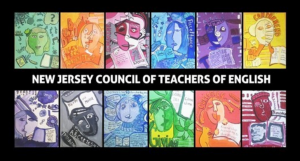 by Audrey Fisch
by Audrey Fisch
As we enter into the final days of summer, I know I’m full of the usual feelings of aspiration and trepidation for the new school year. Weeks of course revision and planning are under my belt. Still, in these last few weeks, I’m still open to more inspiration and new ideas/tools to make my new school year more successful.
It was in this frame of mind that I turned to Personalized Reading: Digital Strategies and Tools to Support All Learners by Michele Haiken (with L. Robert Furman). I know Haiken and her excellent work on gamification (Gamify Literacy: Boost Comprehension, Collaboration, and Learning), so my expectations for Personalized Reading were high. Her newest work did not disappoint me.
Indeed, I must admit that I consumed (inhaled) her latest work nearly in one sitting. And indeed, I find the brevity, simplicity, and practicality of the volume to be its greatest achievement. Haiken has written a slim and eminently readable book on digital strategies and tools that combines references to a research base, a focus on different kinds of learners, and practical and easy-to-follow examples and suggestions. All of this is combined in Haiken’s refreshing, practical, authentic teacher voice. She is using these tools to help the young people in her world succeed and sometimes reflecting on her own journey as a reluctant reader whose own love of books and readings was not ignited until college. This book invites us to look over her shoulder, into her classroom, and learn from her. Who would turn down such an invitation?
The volume is usefully divided into chapters based on types of learners: struggling readers, reluctant readers, English language learners, and advanced readers. The final chapter, “Teaching All Our Readers at the Same Time,” reflects Haiken’s practicality and wisdom. As she notes, the “cacophony of students in our diverse classrooms benefits all student learners, because we learn from each other” (90). Classrooms are not made up of one narrowly defined group of readers, and the labels are useful only up to a point. As Haiken notes, “Bored students are at risk to become reluctant readers” (5). ELL readers can also be reluctant readers. You might select a particular idea in an attempt to support struggling readers in your classroom, for example, but Haiken reminds us that the other students may be just as intrigued and supported.
In each chapter, Haiken cites scholars in the field, but she doesn’t get bogged down in the research. She uses a choice quote or two from some of the major researchers to serve as a scholarly context for the strategies she discusses. For example, in her chapter on reluctant readers, Haiken focuses on the importance of visuals that can “serve as a bridge to print texts” (26). Here she discusses tips (from Douglas Fisher and Nancy Frey) for close reading and their application with visual texts, visual literacy resources like The Jacob Burns Film Center, practical tools for uploading videos and embedding questions and interactive activities, and more.
Among many ideas in this chapter, Haiken highlights her own use of Tara M. Martin’s #BookSnaps. #BookSnaps are created on Snapchat, with photos combined with annotations, reactions, decorations, which can then be shared on social media with classmates. Included is an example from a student, so we can see exactly what Haiken (following Martin) means.
And at the end of the chapter (and for every chapter), Haiken includes a simple, useful table, pairing the teaching strategy (here, using visual texts to teach reading strategies) with suggested technology tools (like #BookSnaps) and relevant links.
There’s so much information, but again, Haiken is both wonderfully inspiring and practical. Her discussion of her Twitter book clubs for her middle schoolers includes specific directions (designate a specific hashtag for students to follow) and critical templates (like a Twitter Permission Letter and Code of Conduct for parents and guardians). And again, there is a sample of the teaching tool in practice – here, a piece of a chat about Leland Melvin’s Chasing Space among Haiken’s students, herself, and her school’s Earth science teacher.
If I were a teacher educator hoping to get my pre-service teaches to think creatively about using technology to reach the widest range of readers, if I were a novice teacher looking for a few new tools to help me reach a few more students in my classes, or if I were a veteran teacher (I am!) looking for a new innovation to introduce in the new school year, I would find Personalized Reading everything I wanted and more. If you are enjoying a few more days of personal development, check out this wonderful text.
Don’t forget to register for the NJCTE 2018 Fall Conference: Approaches to Writing, K-12! Featuring keynote speaker NCTE President Jocelyn Chadwick, the conference will take place September 29 at Kenneth R. Olson Middle School in Tabernacle, NJ. Register today!
